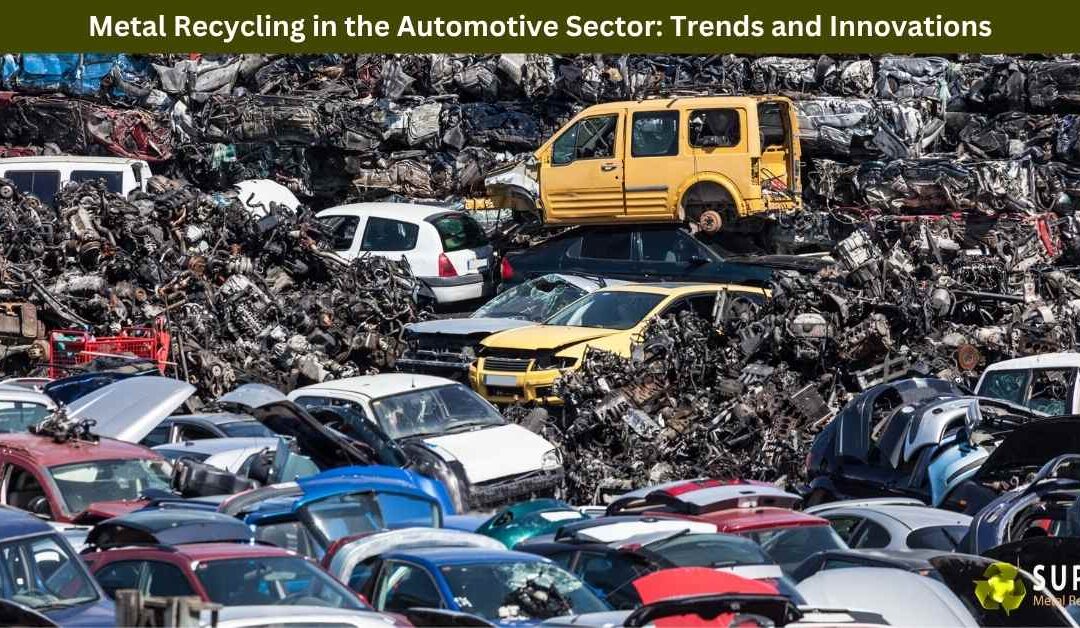The automotive world is undergoing a major transformation—from the rise of electric vehicles to a growing push for sustainable manufacturing. But one area that often flies under the radar is metal recycling. It might not be as flashy as a new EV model or as exciting as self-driving tech, but metal recycling in the automotive sector is quietly driving real change behind the scenes.
With more cars being built, retired, and replaced than ever before, efficient and innovative metal recycling has become a critical part of the vehicle lifecycle. Let’s take a closer look at what’s happening in this space and why it matters for both the environment and the economy.
Why Metal Recycling Matters in the Auto Industry
Cars are metal-heavy machines. From the body panels and engine blocks to wiring and frames, metals make up around 70-75% of the average vehicle. This includes:
- Steel – for the frame, doors, and many mechanical parts
- Aluminum – for lightweight components like wheels and engine parts
- Copper – mostly in wiring and electrical systems
- Platinum group metals – found in catalytic converters
When a car reaches the end of its life, it doesn’t need to become waste. In fact, a well-recycled vehicle can give its materials a second (or third) life—sometimes as parts for a new car, construction material, or even something as unexpected as aircraft components.
Recycling metals from cars reduces the need for raw material extraction, saves energy, and cuts down emissions. It’s a smart move not just environmentally, but economically too.
What’s New: Trends Shaping Automotive Metal Recycling
1. Lightweight Materials, Heavier Recycling Demands
Modern cars are designed with fuel efficiency in mind, which means more lightweight materials like aluminum and magnesium alloys are being used instead of traditional steel.
That’s great for performance, but it also means recyclers need better sorting and processing technology to separate these metals efficiently. A mix-up between aluminum alloys or contamination with steel can reduce the value and usability of recycled materials. So, precision has become more important than ever.
2. Electric Vehicles (EVs) Changing the Game
Electric vehicles are growing fast, and they come with a different mix of materials—more electronics, more copper wiring, and often more aluminum. While EVs don’t have engines or exhaust systems like traditional cars, they bring new recycling challenges, especially when it comes to handling their battery systems and electrical components.
Many recyclers are now adapting their operations to safely dismantle and recover materials from EVs, including rare earth metals used in motors.
3. Automated Dismantling and Smart Sorting
Gone are the days of manually tearing cars apart with a wrench and a torch. Today’s high-volume recycling operations often use automated dismantling tools, robotic arms, and sensor-based sorting to extract metals quickly and safely.
Technologies like X-ray sorting and infrared scanning allow recyclers to identify different metal types with high precision, leading to better recovery rates and purer materials. This level of efficiency wasn’t possible even a decade ago.
4. Closed-Loop Recycling Systems
More automotive manufacturers are working with recyclers to create closed-loop systems, where materials from end-of-life vehicles are reintroduced directly into the production of new ones.
For example, car manufacturers like Ford and BMW are investing in closed-loop aluminum recycling, allowing scrap aluminum from production or dismantled vehicles to be reused in new car parts without compromising quality.
This reduces the demand for virgin materials and creates a more sustainable supply chain.
A Look Behind the Scenes: What Happens to a Retired Car?
Let’s say your old car finally breaks down for good. It gets towed to a licensed auto recycler, where it goes through a few key steps:
- Depollution: Fluids like oil, coolant, and fuel are drained safely.
- Parts Removal: Usable parts are removed for resale—think alternators, doors, wheels.
- Shredding: What’s left is sent through an industrial shredder that breaks the car into small pieces.
- Sorting: Magnets and eddy current separators pull out steel, aluminum, copper, and other metals.
- Processing: These metals are melted down and reused in new products—including, potentially, new vehicles.
Each of these steps has evolved with better technology, improving both safety and material recovery.
The Role of Recyclers in Building Greener Cars
As more automakers commit to net-zero targets, they’re looking closely at their supply chains. Recyclers who can provide high-quality, traceable, recycled metals are becoming essential partners.
This is where metal recycling companies can make a real impact—not just by collecting and processing scrap, but by working closely with manufacturers to support circular production models.
Just Something to Keep in Mind
The car of the future isn’t just electric—it’s recyclable. As the automotive industry continues to evolve, metal recycling is becoming a key piece of the puzzle. With smarter systems, cleaner processes, and stronger partnerships between recyclers and manufacturers, we’re not just breaking cars down—we’re building something better in the process.
Every time a car is recycled properly, we move one step closer to a cleaner, more sustainable future for the entire industry.
If you are in Narre Warren, and looking for a metal recycling service, this is the best way to visit us.
Super Metal Recycling
345 Frankston – Dandenong Road, Dandenong South VIC 3175
(03) 9706 4909


Recent Comments